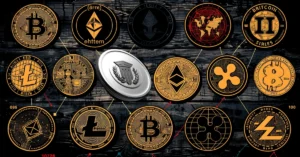DeFi Revolution: Outpacing Bitcoin’s Maximalist Mindset in 2023

The Evolution of Bitcoin: From Maximalism to Interoperability in DeFi
The Rise of Bitcoin Maximalism
In the early days of cryptocurrency, Bitcoin stood alone as the sole decentralized digital asset, leading to the emergence of a dedicated group known as Bitcoin maximalists. These individuals championed the belief that Bitcoin was the only legitimate cryptocurrency, viewing all other digital currencies as mere distractions or even threats to Satoshi Nakamoto’s original vision. This perspective was understandable at a time when Bitcoin’s dominance appeared unchallenged, and the infrastructure for other cryptocurrencies was still developing.
Transitioning to a Collaborative Ecosystem
Fast forward to 2025, and the landscape of cryptocurrency has undergone a remarkable transformation. The rapid advancements in decentralized finance (DeFi) and cross-chain technology have shifted the focus from isolated blockchain ecosystems to interconnected networks. Today, the emphasis is on facilitating seamless interactions among various blockchains, creating a more versatile and integrated environment.
Innovative projects are now working to incorporate Bitcoin directly into the DeFi space, not merely as tokenized assets but as an integral component of this interconnected financial ecosystem. This evolution challenges the traditional maximalist viewpoint, which still clings to the idea that Bitcoin’s separation from other cryptocurrencies is beneficial.
The Flaws of Bitcoin Maximalism
At its core, Bitcoin maximalism is limited by its inability to adapt to the rapidly changing cryptocurrency landscape. This mindset views Bitcoin as a closed system, ignoring the significant advancements occurring across the broader crypto industry. Most contemporary crypto users prioritize convenience and access to diverse services over adherence to a singular ideology.
New Opportunities in Decentralized Finance
The emergence of DeFi has unlocked a plethora of opportunities, including yield farming, lending, and decentralized exchanges, which enhance capital efficiency and empower users. Given Bitcoin’s unmatched security and liquidity, it is only logical for it to play a central role in this financial revolution, rather than being sidelined. Integrating Bitcoin into DeFi does not diminish its value; instead, it enhances it by positioning BTC as a foundational element of the new financial landscape.
Data supports this assertion, with the total value locked in DeFi exceeding $120 billion by 2025, alongside stablecoins contributing an additional $250 billion in market capitalization. However, solutions like wrapped BTC often introduce centralization and counterparty risks, which contradict Bitcoin’s fundamental principles. If Bitcoin can seamlessly traverse multiple blockchains, its value could significantly increase through enhanced interoperability.
A New Era for Cryptocurrency
As the trend toward interoperability gains momentum, the principles of maximalism are becoming increasingly outdated. The future of cryptocurrency lies not in competition among blockchains but in their collaboration, leveraging each other’s strengths to create a more powerful system than any single chain could achieve. While Bitcoin will continue to serve as a premier store of value, its utility will expand through the integration of smart contracts, liquidity pools, and cross-chain technologies. Maximalists who resist this change risk becoming obsolete, much like dinosaurs facing extinction.
The unwavering commitment of maximalists may inadvertently hinder Bitcoin’s progress, isolating it from the modern, interconnected crypto ecosystem. This stance could alienate users and developers who envision a unified network that meets real-world demands.
While Bitcoin maximalism has not completely vanished, it is clearly on the decline. As interoperability becomes the norm in the industry, the notion of Bitcoin as a standalone giant will likely diminish. The DeFi revolution is already underway, propelling Bitcoin into a new era. The pressing question remains: will maximalists adapt to this evolution, or will they become relics of a past era?







